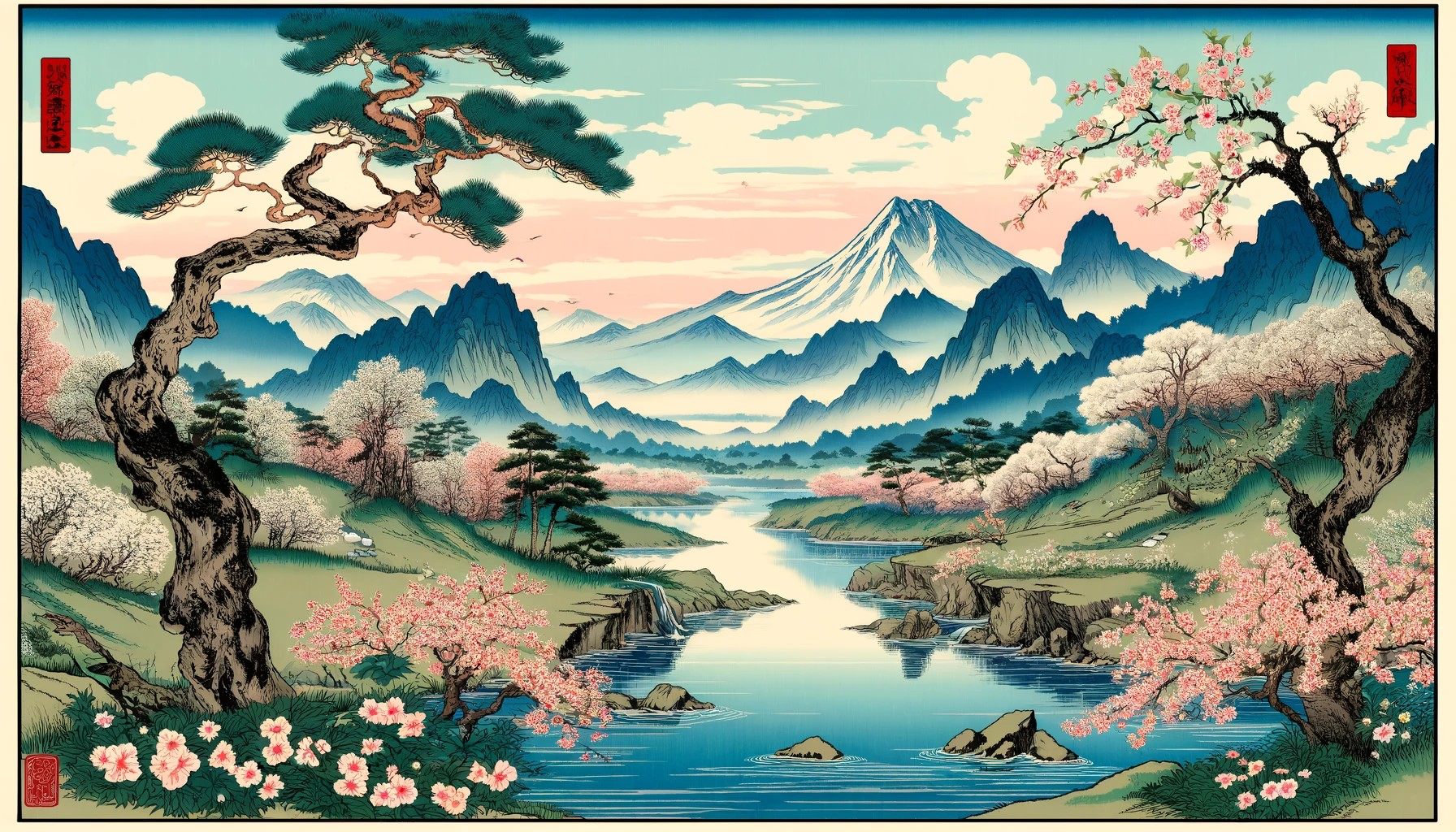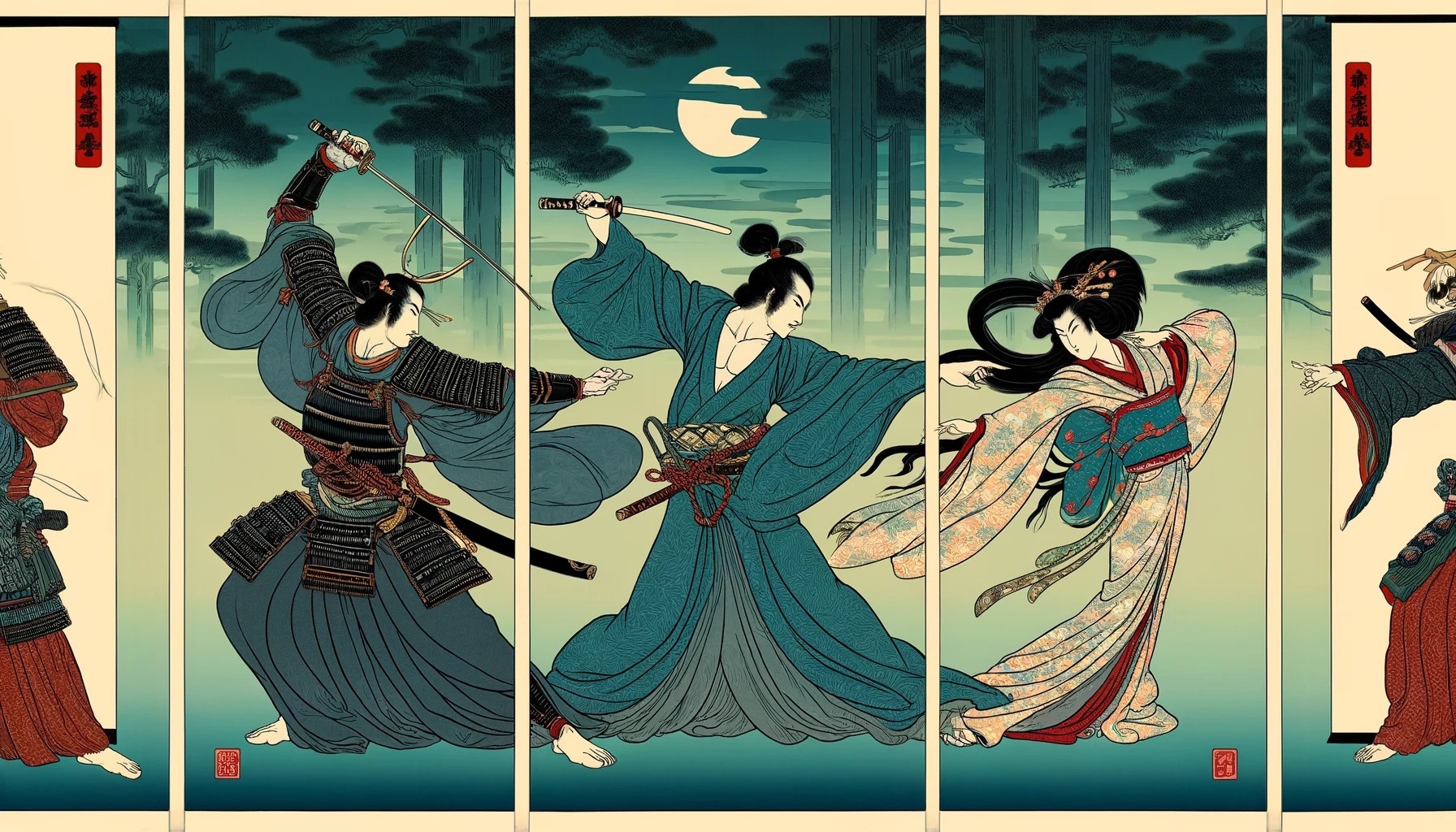Utagawa Yoshitora
Utagawa Yoshitora (歌川芳虎), an ukiyo-e artist active towards the end of the 19th century, was born in Edo
(modern Tokyo). The exact dates of his birth and death are unknown.
Yoshitora was a pupil of Utagawa Kuniyoshi (歌川国芳), but due to artistic and personal differences—including an incident where he
was imprisoned for fifty days for producing a satirical print about Tokugawa Ieyasu (徳川家康)—he left his mentor and adopted the artist name Mosai.
During the Edo period, particularly after the Treaty of Kanagawa in 1854, Japan began to open its ports to foreign trade, culminating with the
opening of the port of Yokohama in 1859. This event sparked great curiosity about Westerners, who became the primary subjects of the Yokohama-e (横浜絵)
prints, a genre in which Yoshitora excelled. These works often depicted foreigners in unusual clothing and engaging in strange occupations, revealing Japan's
initial impressions of Westerners.
In addition to Yokohama-e, Yoshitora produced prints of warriors, kabuki actors, beautiful women, and cityscapes, sometimes drawing inspiration from Western
engravings for depictions of foreign scenes. His work remains a valuable document of the era, showing how Japan perceived the outside world during the cultural
opening of the Meiji period, which began in 1868.
Yoshitora also worked as an illustrator for newly founded newspapers during the Meiji era. Today, his works are part of celebrated collections such as those at the
British Museum, the Philadelphia Museum of Art, and the Metropolitan Museum of Art.

En'ya Hangan Minamoto no Takasada
Biographies of the loyal retainers
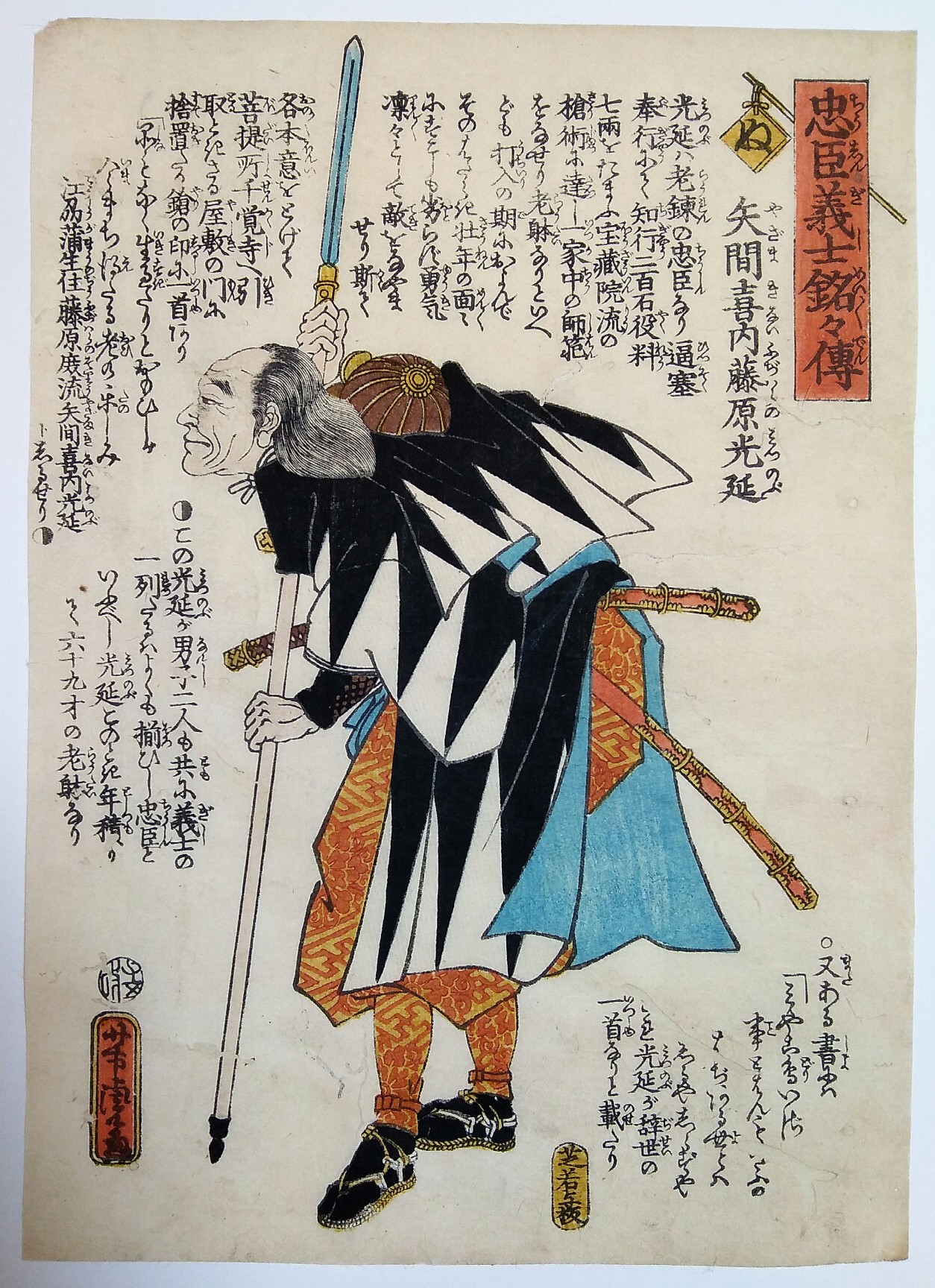
Yazama Kinai Fujiwara no Mitsunobu
Biographies of the loyal retainers
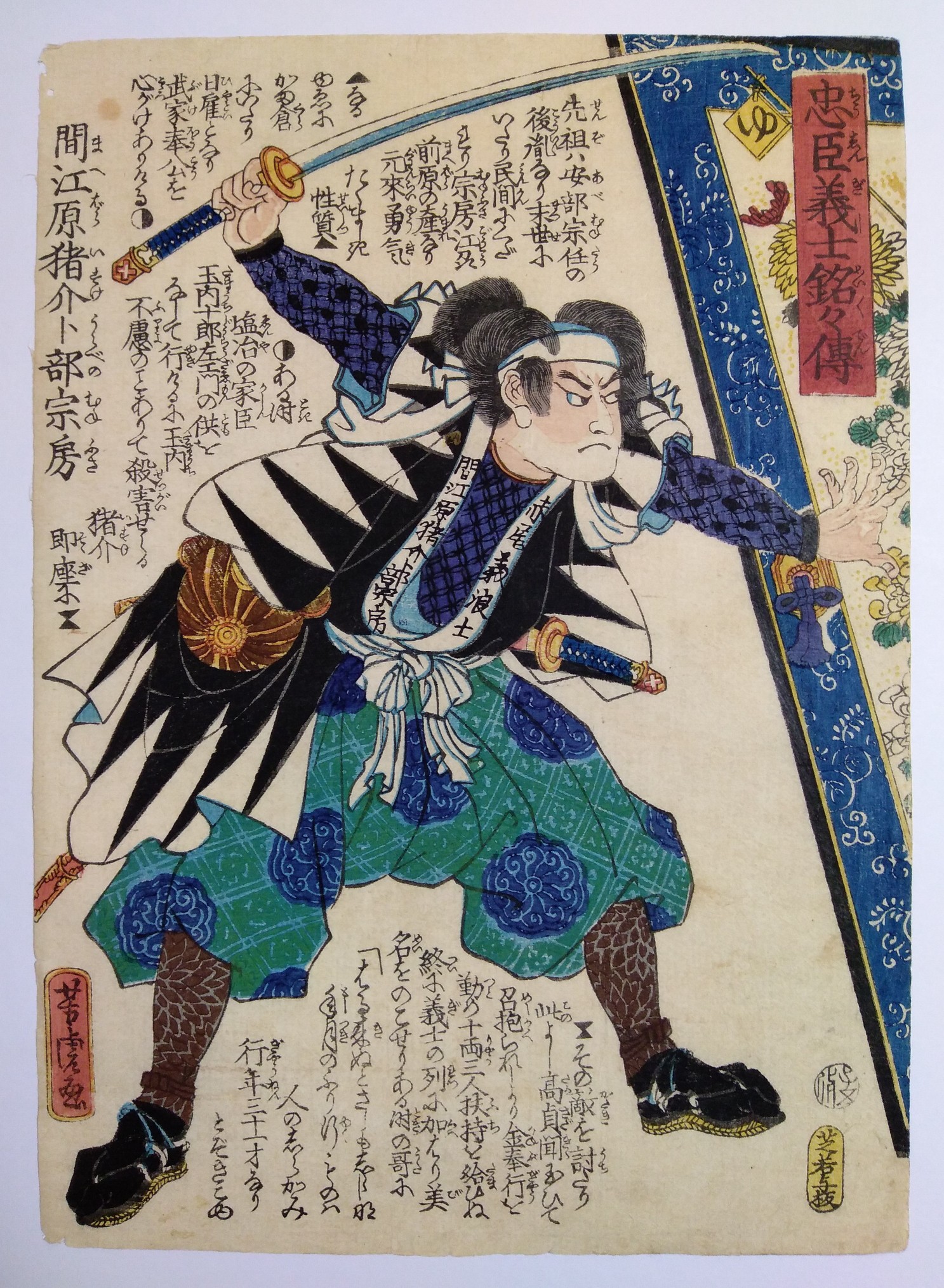
Maebara Isuke Urabe no Munefusa
Biographies of the loyal retainers
Sold out
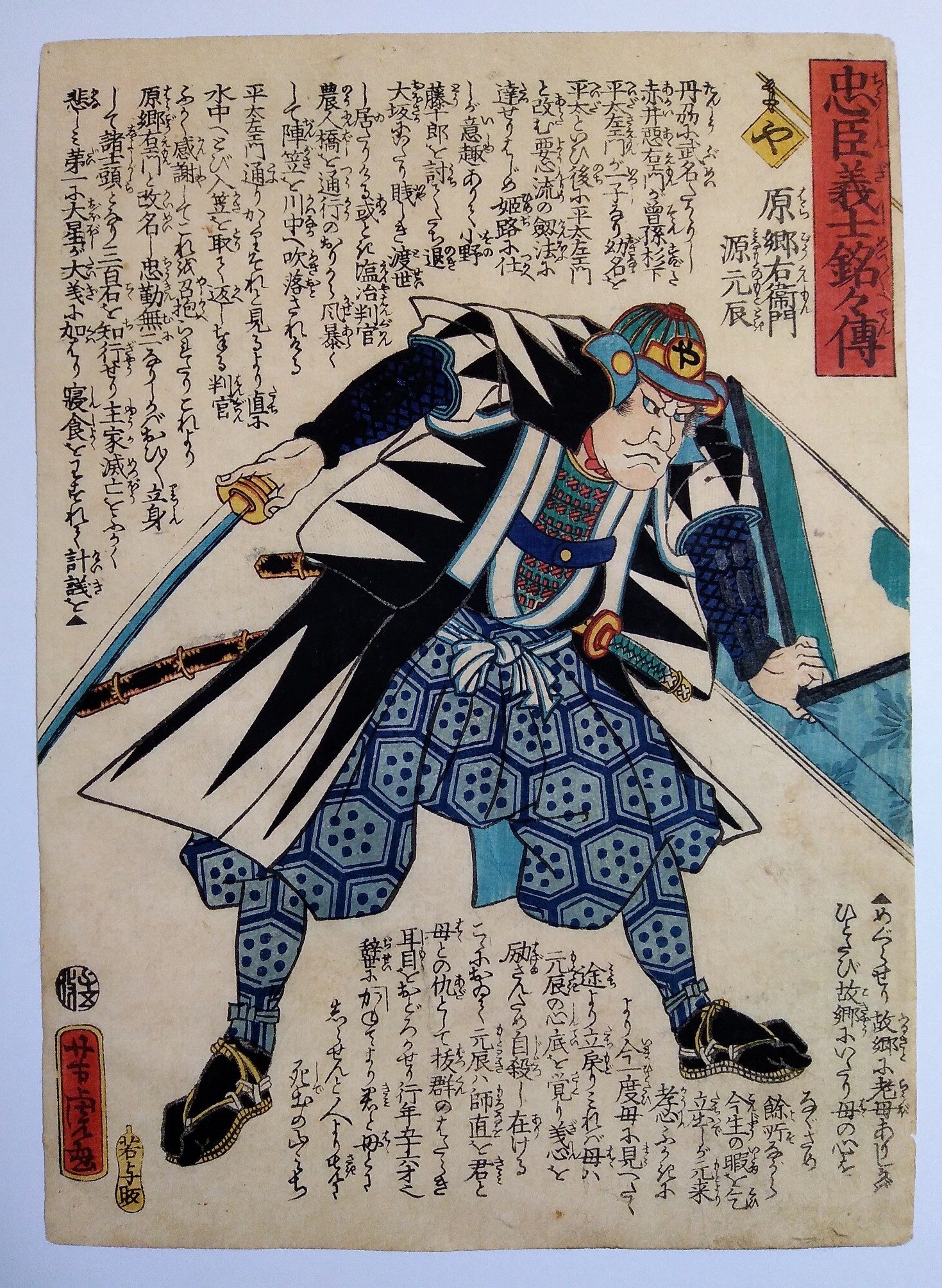
Hara Gōemon Minamoto no Mototatsu
Biographies of the loyal retainers
Sold out

Ushioda Masanojō no Takanori
Biographies of the loyal retainers
Sold out
